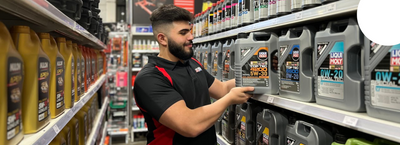Proper maintenance of your vehicle's cooling system is essential for optimal performance and longevity. One crucial aspect of cooling system maintenance is changing the coolant regularly. In this comprehensive guide, Universal Auto Spares will walk you through the step-by-step process of changing vehicle coolant, providing essential tips and insights along the way. By following these instructions, you can ensure that your engine remains cool, protected, and efficient.
Changing vehicle coolant involves draining the old coolant, flushing the system, and refilling it with fresh coolant. This process helps remove contaminants, prevent corrosion, and maintain the coolant's effectiveness in dissipating heat. Here's an overview of the steps involved in changing vehicle coolant:
-
Gather the necessary items:
- Safety goggles and gloves
- Drain pan
- Coolant
- Distilled water (if required)
- Funnel
- Hose clamp (if necessary)
- Cooling system flush (optional)
-
Prepare your vehicle:
- Park your vehicle on a level surface and engage the parking brake.
- Ensure the engine is cool before proceeding.
-
Locate the radiator:
- Open the hood and locate the radiator and coolant reservoir.
- Familiarize yourself with the radiator's drain plug and fill cap.
-
Drain the old coolant:
- Place the drain pan under the radiator drain plug.
- Carefully open the drain plug, allowing the old coolant to flow into the pan.
- Dispose of the old coolant properly as per local regulations.
-
Flush the cooling system (optional):
- If you choose to flush the system, follow the instructions on the cooling system flush product.
- Flushing helps remove scale, rust, and sediment from the cooling system.
-
Refill the coolant:
- Close the drain plug securely once all the old coolant has been drained.
- Refer to your vehicle's manual for the recommended coolant type and mixing ratios.
- Use a funnel to pour the coolant into the radiator or coolant reservoir.
- Fill the system to the appropriate level, leaving room for expansion.
- If required, mix the coolant with distilled water as per the manufacturer's guidelines.
-
Bleed the cooling system:
- Start the engine and let it run until it reaches normal operating temperature.
- Check the coolant level and top up if necessary.
- Slowly squeeze the radiator hoses to help release any air pockets.
- Recheck the coolant level and add more if needed.
-
Check for leaks:
- After shutting off the engine, inspect the radiator, hoses, and connections for any signs of leakage.
- Tighten any loose fittings or clamps as required.
Tips for Changing Vehicle Coolant:
-
Safety first:
- Always wear safety goggles and gloves to protect yourself from hot coolant and potential spills.
- Never open the radiator cap when the engine is hot to avoid injury from steam and hot coolant.
-
Follow manufacturer recommendations:
- Consult your vehicle's manual or contact a professional to determine the appropriate coolant type and mixing ratios for your specific vehicle.
-
Use quality coolant:
- Opt for high-quality coolant from reputable brands like Universal Auto Spares to ensure optimal performance and protection for your engine.
-
Consider a cooling system flush:
- Flushing the cooling system periodically helps remove deposits and contaminants, ensuring efficient coolant circulation.
-
Properly dispose of old coolant:
- Old coolant contains hazardous materials, so dispose of it according to local regulations or take it to a recycling center.
Regularly changing your vehicle coolant is a critical aspect of maintaining a healthy cooling system. By following the step-by-step process outlined in this guide and using quality coolant from Universal Auto Spares, you can ensure optimal engine performance, prevent overheating, and extend the lifespan of your vehicle. Remember to prioritize safety, follow manufacturer recommendations, and properly dispose of old coolant. Keep your engine cool and reliable by giving it the care it deserves through proper coolant maintenance.
For more automotive maintenance tips and high-quality auto parts, visit Universal Auto Spares, your trusted partner in keeping your vehicle running smoothly.









